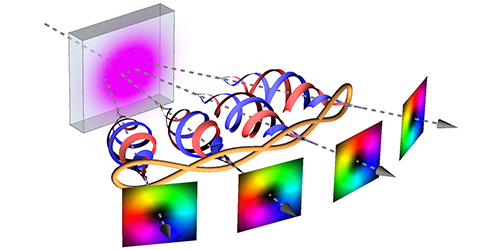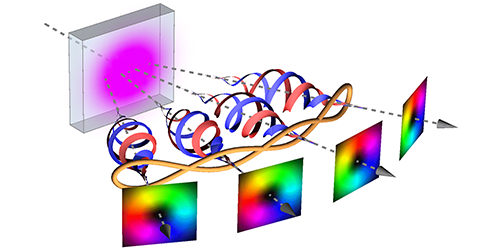Entangled Quadruplet
The more states that a quantum system has available, the more quantum information it can hold. A new experiment demonstrates the entanglement of four photons in a potentially high-dimensional (i.e., many-state) space. Unlike previous multiparticle entanglement realizations, this quadruplet is made up of photons entangled in their quantized orbital angular momentum (OAM). A system such as this could boost channel capacity in quantum information systems, as well as offer increased security for quantum cryptography applications.
Physicists have previously entangled multiple particles (the current record is 14), but these have all been qubits defined by two states (like the two sides of a coin). To increase quantum information content one can use “quNits,” i.e., particles characterized by multiple states (like N-sided dice). A currently popular quNit is a photon in an OAM mode in which different states are defined by the amount of helical twisting in the wave front. Recent work has measured entanglement in pairs of photons in high-dimensional OAM modes that have over 100 states.
Further developing this multilevel entanglement, Wolfgang Löffler of the University of Leiden, Netherlands, and his colleagues studied entanglement of four photons, each in a three-state OAM mode. The experiment involved firing laser pulses into a nonlinear crystal that produces entangled photon twins as well as entangled photon quadruplets (although less often). This entanglement is usually observed in polarization, but if the system is rotationally symmetric, then also the OAM degrees of freedom are entangled. The team projected the quadruplet photons into different transverse modes (patterns of the spatial distribution of the photon wave), and they found correlations in these projections that implied the four photons were OAM-entangled.
This research is published in Physical Review Letters.
–Michael Schirber





